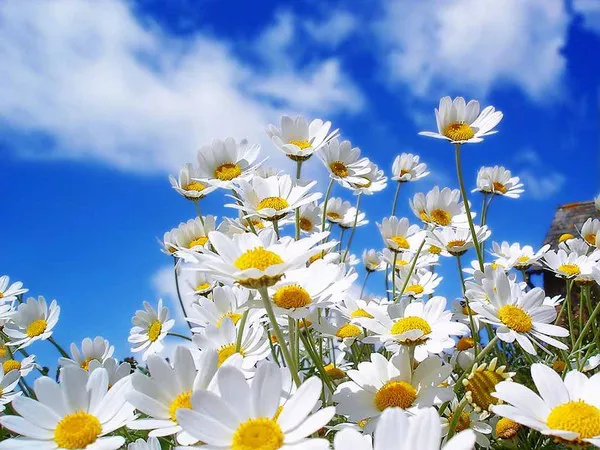April, with its burgeoning signs of spring, heralds the arrival of nature’s renewal and the celebration of life. As we bid farewell to the icy grasp of winter, April brings forth a vibrant array of blooms, each carrying its own symbolism and significance. Among these floral treasures, one stands out as the emblem of April births: the enchanting daisy. In this article, we delve into the captivating world of April’s birth flower, exploring its history, meanings, and cultural significance.
A Glimpse into History: Origins and Symbolism
The daisy, with its delicate white petals and golden center, has captivated hearts for centuries with its simple yet elegant beauty. Its name is derived from the Old English term “day’s eye,” as it opens its petals at dawn, following the sun’s path across the sky, and closes them at dusk. This inherent connection to the sun has imbued the daisy with symbolism associated with purity, innocence, and new beginnings.
Ancient civilizations revered the daisy for its medicinal properties and symbolic meaning. The ancient Egyptians used daisies in medicinal concoctions, believing in their healing powers. Similarly, the Romans adorned their homes with daisies during festivals, associating them with love and fertility.
In Christian symbolism, the daisy became intertwined with the Virgin Mary, symbolizing her purity and innocence. Legend has it that daisies sprung from the ground where the tears of the Virgin Mary fell, as she wept for the suffering of her son, Jesus Christ.
Floral Language: Meanings and Interpretations
Flowers have long been used as a means of communication, expressing sentiments and emotions when words fall short. The daisy, with its timeless charm, carries a variety of meanings across different cultures and contexts.
One of the most prevalent meanings of the daisy is innocence and purity. Its pristine white petals evoke a sense of simplicity and sincerity, making it a popular choice for bridal bouquets and christening ceremonies.
Additionally, the daisy symbolizes loyalty and faithfulness, rooted in its enduring nature. Its ability to thrive in diverse environments serves as a reminder of the strength found in steadfastness and loyalty.
Moreover, the daisy is often associated with youthful energy and optimism. Its cheerful demeanor and resilient nature inspire feelings of hope and positivity, making it a beloved symbol of happiness and joy.
Cultural Significance: Daisies in Art, Literature, and Folklore
Throughout history, artists, writers, and storytellers have been enamored by the beauty of daisies, incorporating them into their works as symbols of purity, love, and the fleeting nature of life.
In art, daisies have been immortalized in countless paintings, from the romantic depictions of daisy-filled meadows by Impressionist masters to the intricate floral arrangements in still-life compositions. The daisy’s timeless appeal continues to inspire artists across mediums, serving as a muse for creativity and expression.
Likewise, literature abounds with references to daisies, where they often serve as poignant symbols laden with meaning. In Shakespeare’s works, daisies are frequently mentioned as symbols of innocence and unrequited love. In “A Midsummer Night’s Dream,” the character Ophelia famously distributes daisies while lamenting lost love, underscoring their association with purity and melancholy.
In folklore and mythology, daisies feature prominently in tales and legends from around the world. In Norse mythology, the daisy is associated with Freya, the goddess of love and fertility, symbolizing her purity and beauty. In Celtic folklore, daisies were believed to possess magical properties, capable of warding off evil spirits and bringing good fortune to those who wore them.
Modern Applications: Daisies in Contemporary Culture
In contemporary culture, daisies continue to captivate hearts and minds, finding their way into various aspects of everyday life, from fashion and design to gardening and beyond.
In fashion, daisies have experienced a resurgence in popularity, adorning clothing, accessories, and jewelry with their charming motifs. Their whimsical appeal adds a touch of nostalgia and innocence to modern designs, appealing to fashion enthusiasts of all ages.
Moreover, daisies remain a beloved choice for gardeners and flower enthusiasts, thanks to their versatility and ease of cultivation. Whether planted in meticulously curated gardens or scattered wild in meadows, daisies brighten landscapes with their cheerful blooms, attracting pollinators and delighting onlookers.
Furthermore, daisies continue to inspire culinary creations, with their edible petals adding a decorative touch to salads, desserts, and beverages. Their delicate flavor and visual appeal make them a favorite ingredient among chefs and home cooks alike, adding a whimsical flair to culinary creations.
Celebrating April Births: Daisies as Birth Flowers
As the birth flower for April, daisies hold a special significance for those born during this month. They embody the essence of spring, with their fresh blooms symbolizing new beginnings and growth. Gifting daisies to April-born individuals is a thoughtful way to celebrate their birth and convey wishes of happiness, purity, and prosperity.
Moreover, daisies make for charming additions to birthday bouquets and floral arrangements, adding a touch of natural beauty and symbolism to the festivities. Whether presented as a single stem or arranged in a vibrant bouquet, daisies serve as timeless reminders of life’s simple joys and the beauty found in nature.
Conclusion
In conclusion, April’s birth flower, the daisy, stands as a testament to the enduring beauty of nature and the profound symbolism embedded within its delicate petals. From ancient civilizations to contemporary culture, daisies have captured the imagination of humanity, inspiring awe and admiration across generations. As we embrace the arrival of spring and the promise of new beginnings, let us pause to appreciate the enchanting allure of April’s birth flower, the dazzling daisy.


